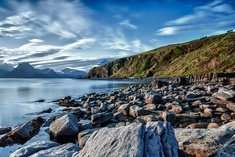Featured Quizzes
User Quizzes
Create Quiz
Data and Charts
Badges and Games
About JetPunk
JetPunk Shop
Dark Mode

A level Physical Geography: Coasts Part 1
Made this quiz with my benefit in mind but you are welcome to try it
Sorry if some of the vocab is different to what you use
From Edexcel exam board
Will try to update as i get further through the course
Rate:
Last updated: October 13, 2022
You have not attempted this quiz yet.
More quiz info >>
| First submitted | February 20, 2021 |
| Times taken | 95 |
| Average score | 26.2% | Report this quiz | Report |
20:00
Enter answer here
0
/ 42 guessed
Time Used
00:00
Best Time
00:00
The quiz is paused. You have remaining.
Scoring
You scored / = %
This beats or equals
% of test takers
also scored 100%
The average score is
Your high score is
Your fastest time is
Keep scrolling down for answers and more stats ...
|
|
Comments
No comments yet
New and Popular
Save Your Progress
A Level revision
Quiz series by CharlieRich16
...
Copyright H Brothers Inc, 2008–2024
Contact Us | Go To Top | View Mobile Site
